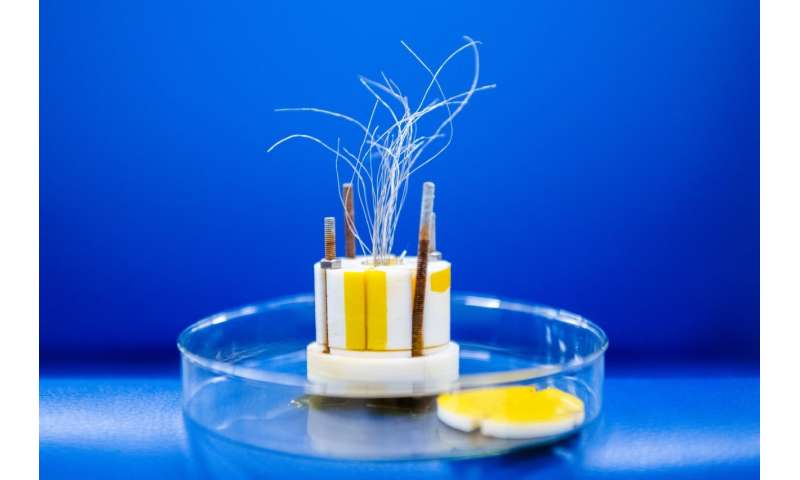NUST MISIS scientists develop a neuroimplant for neural tissue regeneration

Young university scientists have developed an electrically conductive hybrid implant to stimulate the regeneration of neural tissue in neurosurgical practice. The material will provide the right direction for the growth of restored nerve fibers and neuroglia due to electrical stimulation. The development has been presented as a masters thesis of graduates of the "Biomaterials science" iPhD Master's degree program.
During the first year after a spinal injury, the mortality rate of the patients reaches 30%, disability—slightly less than 100%. Disability in all nerve injuries occurs in 60% of all cases. Weak and insufficient regeneration of nerve tissue causes dificulties in treating such injuries.
Nerve tissue is a very special type of cellular structure. For the directed growth and transformation of multipotent stem cells into neuroglia cells, it is important not only to have an alternating electric field, but also its spatial orientation along the cell growth lines.
Based on this scientific hypothesis, NUST MISIS master's students have developed and synthesized a flexible composite material with anisotropic (different in different directions) conductivity. Neuroimplants based on this material can be used to stimulate the regeneration and recovery of nerve tissue in areas of injuries.
The composite material is a scaffold with a collagen-based directed structure, containing a flexible biocompatible electrically conductive material from carbon fibre with an electrode diameter equal to the diameter of the nerve fiber of about 30 micrometres.
"To solve this problem, we have found the materials for the base and for the conductive component, developed a method for producing films with a conductive pattern, determined the physical and mechanical characteristics of the composite and tested the obtained samples in vitro," said the author of the project, a graduate student of the NUST MISIS "Biomaterials Science" iPhD Master's program Sergey Zhirnov.
Young researchers have developed a technique for producing flexible composite films with a conductive section sized comparable to the diameter of the nerve fiber. The "non-electrical" part of the material has properties close to those of the tissue of the peripheral nervous system, particularly in terms of modulus of elasticity.
Based on the synthesized material, a laboratory sample of the peripheral nerve implant has been obtained.
The developers continue to work on the project within the framework of the "Biomedical Materials and Bioengineering" strategic project as part of the "Priority 2030" program. The next steps will be: prototype production, in vitro material science and biological tests with nervous system cells, patenting of the invention and transition to preclinical medical trials.
Provided by The National University of Science and Technology MISIS